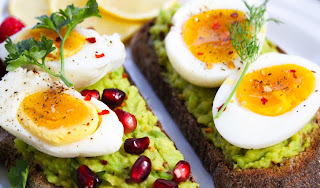INTRODUCTION
In this, we are going to give you some tips on combining the body types with keto and in minute fasting.
If you have all three of these together you can really get your body healthy fast now, but we're putting this layer of body types over the ketogenic diet and intermittent fasting just to make it an amazing program.
ADRENAL BODY
We're just going to talk about what you would do if you're in the adrenal type. You're going to do ketogenic and you're also going to do minute fasting but you're going to go a little higher with the protein 2 instead of 3 ounces of protein you lose 6 ounces of protein for the adrenal. Because you're in a breakdown mode of protein eating a little bit more you also need a little bit more sleep stress reduction. You want to do things to bring the stress down you want to go long walks you want to give yourself more recovery time you want to probably even take naps.
But try to get a little bit more sleep on that we would like to use the acupressure tool to our body to get wind down faster. Potassium is important for the adrenal so that means a lot of greens the electrolyte powder would be good but potassium helps the adrenal calm down the physiological relaxer mineral for the flight-or-fight nervous system.
You actually need more cholesterol with the adrenal body type because all the hormones that are produced by the adrenal are made from cholesterol so you don't want to go low fat at all egg yolks are the best ok vitamin C foods that are the vegetables. When you get the potassium from your vegetables you also get the vitamin C vitamin C is very very important for making adrenal hormones and just supporting the adrenal gland itself. Because it stores vitamin C to make its hormones.
OVARY TYPE
Ovary type you gotta go organic completely one or two inorganics you cannot be exposed to the GMO foods. Because when you're an ovary type you have a problem with estrogen and if you have a problem with estrogen you might be more at risk for cancers breast cancer uterine cancer and so those tissues are very sensitive to estrogen and things called endocrine disruptors which are any chemicals that mimic estrogen glyphosate which is an herbicide mimics estrogen.
THYROID
They need higher cholesterol to make those as a precursor thyroid okay you need a little lower protein for the thyroid because the metabolism is so slow iodine is going to be important. Sea kelp is going to be essential because that's the mineral that helps make the thyroid hormones if you ever see t3 or t4 that's the number of iodine molecules that are connected to that hormone and then also if you can see calc you also have selenium which is another mineral to help the conversion.
If you have a real bad thyroid your metabolism is really slow you're going to have to do intermittent fasting down to eventually one meal a day that's what's going to take on some cases to get them to lose weight. But make sure that you don't go low-calorie never make sure that with the thyroid because you're going to slow the metabolism down even more so the only problem that you would run into is to make getting enough calories or enough nutrients from you. It has to be quite robust but you probably don't want to do a lot of cruciferous with diuretic the truth is because that can deplete iodine so do other vegetables like spinach and leafy greens and the peppers and things like that.
LIVER
The liver if it's a liver body type goes a little low on the protein like three ounces of protein. But if you're a big guy maybe you need six ounces but try not to go too much because too much protein destroys the liver limit. With the number of nuts that you consume it's easy to start going crazy with peanut butter and nuts. But that can aggravate the liver as well cruciferous vegetables are a must because those vegetables help repair liver function go gradually with your fat. When you're doing it omits too fast, sometimes you can overdo it and jam up the liver and the gallbladder. Just kind of go graduate that makes sure it's not too much you need. But not a crazy amount, not as much as an adrenal case lots of greens they'll quite huge salads very very important.
"THANK YOU FOR READING THIS ARTICLE PATIENTLY. KINDLY SUPPORT LIKE THIS FOREVER."





































